The Evolution and Importance of High-Visibility Workwear
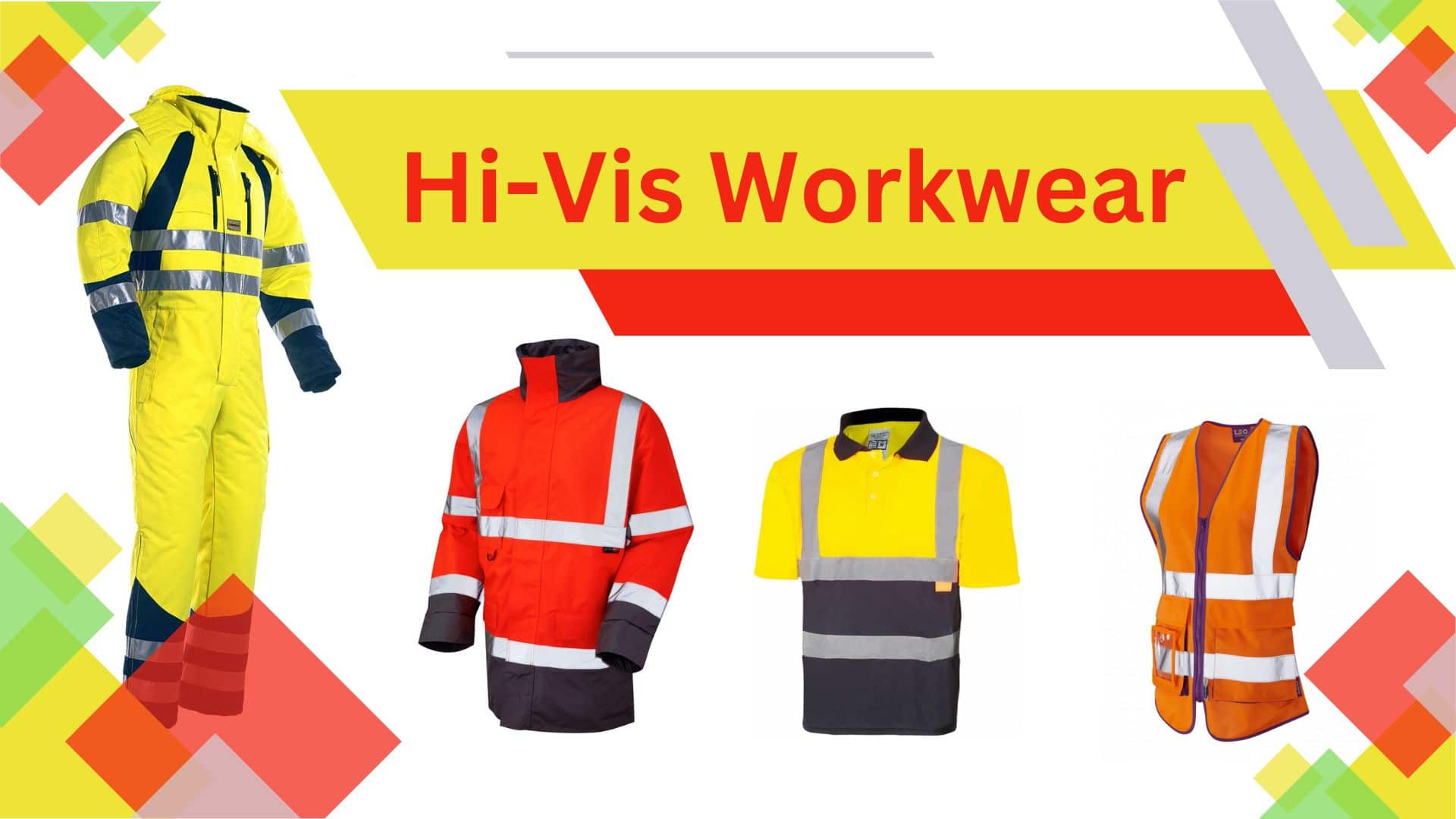
High-visibility workwear, often simply referred to as "high-vis," stands as a critical component in modern occupational safety. Characterised by its vividly bright and reflective properties, high-vis clothing is specifically designed to make the wearer more visible in various environments, especially where they might otherwise blend into the background. This type of clothing typically utilises fluorescent colours like neon yellow, orange, or lime green, often combined with reflective stripes that shine brightly when illuminated by a light source.
The concept of high-visibility workwear is rooted in the fundamental principle of 'seeing and being seen.' In numerous work environments, particularly those with high traffic or low-light conditions, the ability to be seen can be the difference between safety and serious injury. High-vis clothing is particularly essential in industries such as construction, road maintenance, and emergency services, where workers are constantly exposed to potential hazards like moving vehicles, machinery, or varying light conditions.
The importance of high-visibility clothing in workplace safety cannot be overstated. It serves not just as a passive protective gear but as an active safety measure, alerting others to the presence of workers and thereby significantly reducing the risk of accidents. In many jurisdictions, the use of high-vis workwear is not just recommended but mandated by safety regulations, underscoring its crucial role in protecting workers from harm.
As we delve into the evolution of high-visibility workwear, we will explore how this indispensable safety attire has developed over the years, adapting to the changing needs of the workplace and integrating technological advancements, all with the singular goal of ensuring the safety and visibility of workers in hazardous environments.
TABLE OF CONTENTS
- The Origins of High-Visibility Workwear
- Development Through the Decades
- High-Visibility Standards and Regulations
- High-Visibility Clothing in Various Industries
- The Role of High-Visibility Workwear in Accident Prevention
- Future Trends and Innovations
The Origins of High-Visibility Workwear
The journey of high-visibility workwear dates back several decades, marking its inception as a distinct response to the growing concerns over workplace accidents, particularly in high-risk environments. Initially, the concept of making workers more visible was primitive and not standardised, often relying on whatever materials were readily available.
Early Uses of High-Visibility Clothing
The earliest instances of high-visibility clothing can be traced to the mid-20th century. Workers in high-risk areas, like railway and road workers, started wearing brightly coloured vests or sashes to stand out against the backdrop of their working environment. This practice was borne out of necessity; it was crucial for workers to be visible to vehicle drivers, machine operators, and their colleagues to prevent accidents.
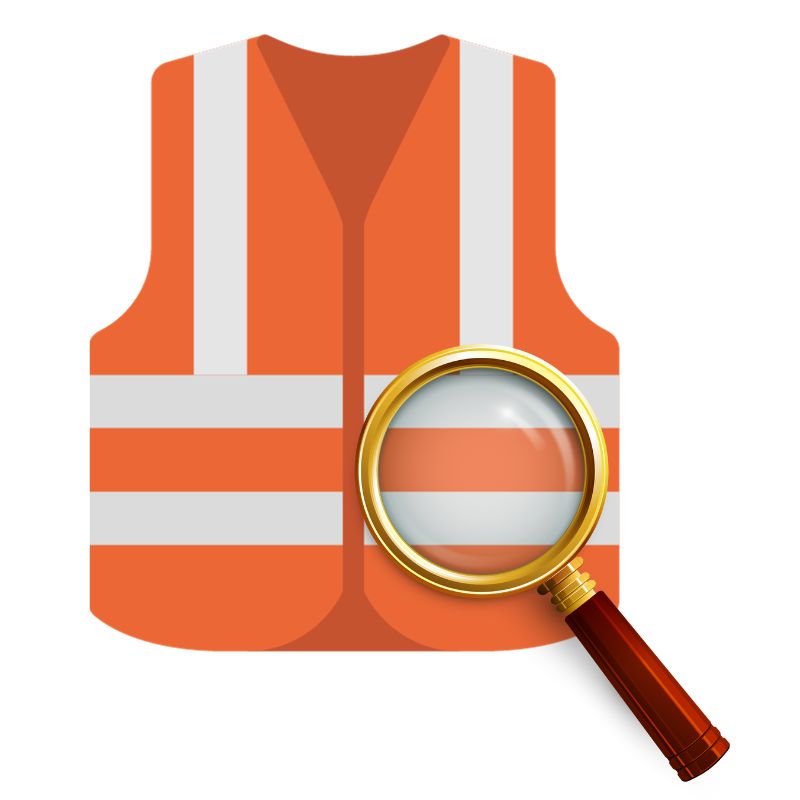
Initial Materials and Designs
In its early days, high-visibility clothing was rudimentary and often improvised. The materials used were not specifically designed for visibility purposes. Brightly coloured fabrics, which were more readily noticeable, became the go-to choice. These were typically cotton or wool, which, while offering increased visibility, did not possess the reflective or fluorescent qualities of modern high-vis materials.
The designs were basic as well – vests, jackets, and sometimes hats or caps. These garments were primarily intended to cover the most visible parts of the body while not restricting the movement of the worker. The focus was on functionality, with little consideration given to comfort or durability under harsh working conditions.
This period marked the initial recognition of the importance of visibility in worker safety. It set the stage for the evolution of high-visibility workwear, which would soon see significant advancements in materials and design as the understanding of workplace safety grew and technology advanced. The shift from these early efforts to more sophisticated and standardised high-vis workwear reflects a broader commitment to occupational safety and the well-being of workers in hazardous environments.
Development Through the Decades
The evolution of high-visibility workwear is a story of continual innovation and adaptation, reflecting the ever-changing demands of workplace safety. Over the decades, significant developments have occurred, each phase introducing new materials and designs to enhance the visibility and safety of workers.

1950s to 1970s: The Introduction of Fluorescent Materials
The era of the 1950s to the 1970s marked a significant turning point in the development of high-visibility clothing. It was during this time that fluorescent materials were first introduced. These materials had the unique ability to absorb ultraviolet light and emit it as visible light, making the wearer far more noticeable in low-light conditions. Fluorescent colours like bright orange, yellow, and lime green became standards in high-vis workwear. This period saw the transition from merely bright clothing to specifically engineered high-vis garments designed to stand out in various lighting conditions.
1980s to 2000s: Advancements in Materials and the Introduction of Reflective Tapes
The next few decades witnessed further advancements. During the 1980s to the 2000s, the focus shifted towards enhancing the functionality and durability of high-vis clothing. This period introduced synthetic fabrics like polyester, which offered improved durability and weather resistance compared to traditional materials. Another groundbreaking development was the introduction of reflective tapes. These tapes, when sewn onto garments, significantly increased visibility, especially at night or in low-light conditions, as they reflected light directly back to its source, such as a vehicle's headlights.
2000s to Present: Technological Innovations and Modern Materials
From the 2000s onwards, the field of high-visibility workwear has seen remarkable technological innovations. Modern materials that are lightweight, breathable, and even more durable have been developed. This era is also characterised by the integration of smart technology into workwear. Features like LED lighting, GPS tracking, and even wearable technology that monitors the health and safety of the wearer are being explored and integrated. This not only enhances visibility but also adds a layer of digital safety to the physical protection offered by the clothing.
The journey of high-visibility workwear over these decades highlights a consistent and growing commitment to worker safety. Each advancement not only improved visibility but also enhanced comfort, durability, and functionality, ensuring that high-visibility workwear remains an indispensable and ever-evolving tool in workplace safety.
High-Visibility Standards and Regulations
The evolution and effectiveness of high-visibility workwear are closely tied to the development of safety standards and regulations. Particularly in Europe, these standards play a pivotal role in defining the requirements for high-vis clothing, ensuring consistency, reliability, and safety across various industries.
EN ISO 20471: The European Standard
In Europe, the primary standard governing high-visibility clothing is EN ISO 20471. This international standard, which replaced the earlier EN 471 standard, sets out strict criteria for the design and manufacture of high-visibility clothing. EN ISO 20471 specifies the requirements for the base and retro-reflective materials used in high-vis garments, as well as the minimum areas and placement of these materials.
The standard classifies high-vis clothing into three categories, based on the level of visibility they provide:
Class 1: Provides the lowest level of visibility. Suitable for low-risk environments where there is a separation of pedestrian workers and traffic.
Class 2: Offers a moderate level of visibility. Typically used in environments with higher traffic speeds or poor lighting conditions.
Class 3: Ensures the highest level of visibility. Required in the most hazardous environments, often where workers are in close proximity to high-speed traffic or in extremely poor lighting conditions.
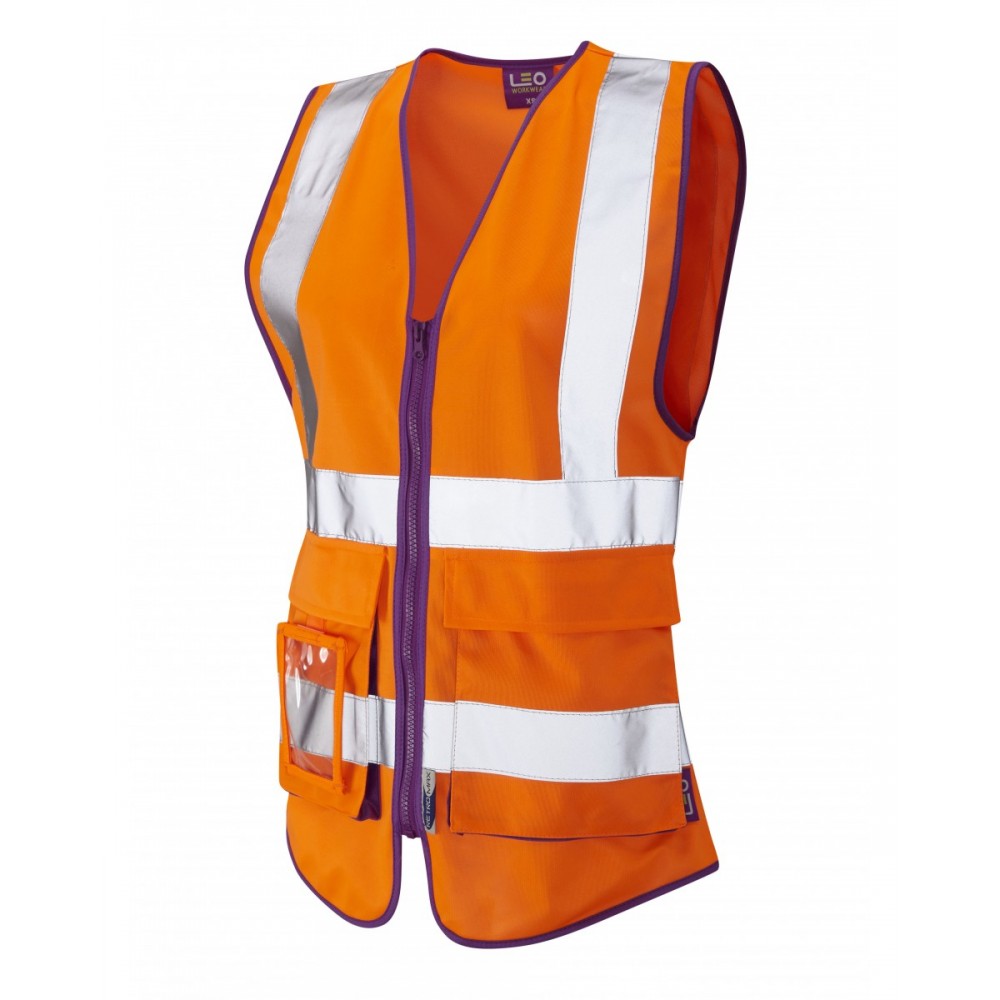 |
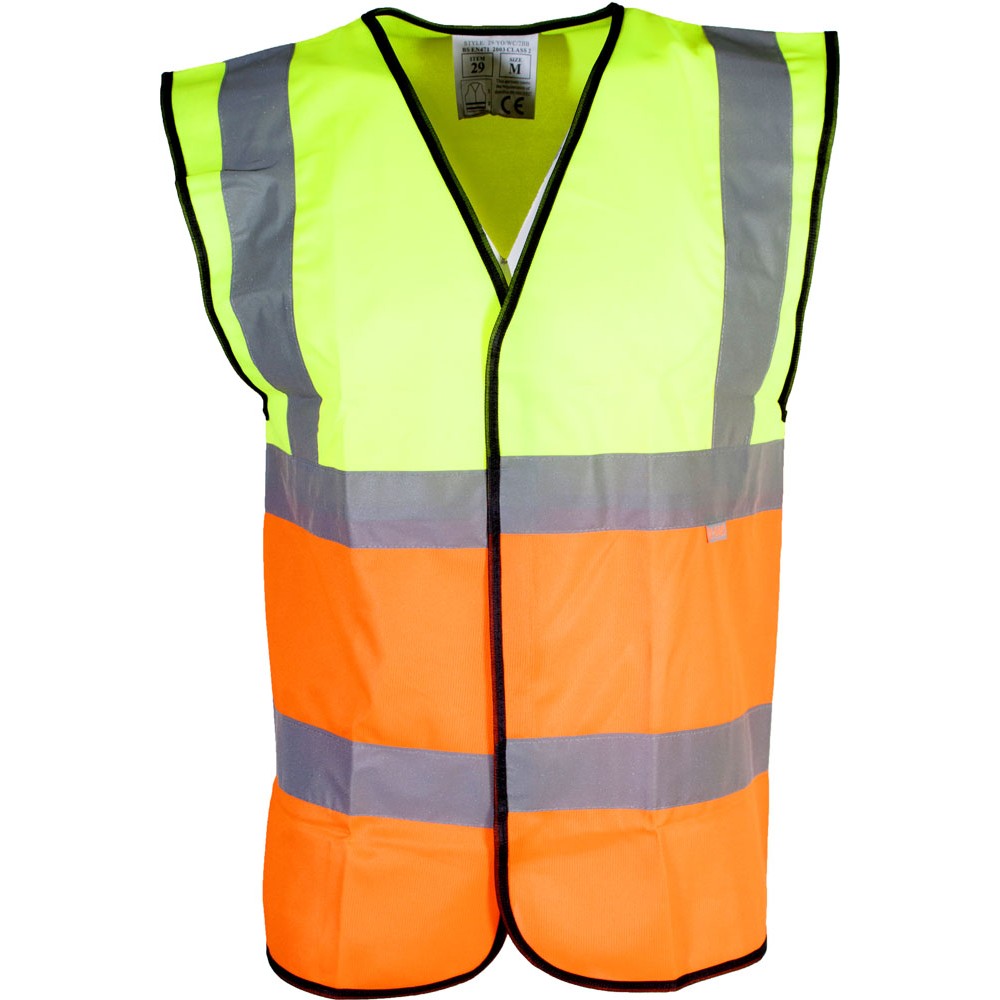 |
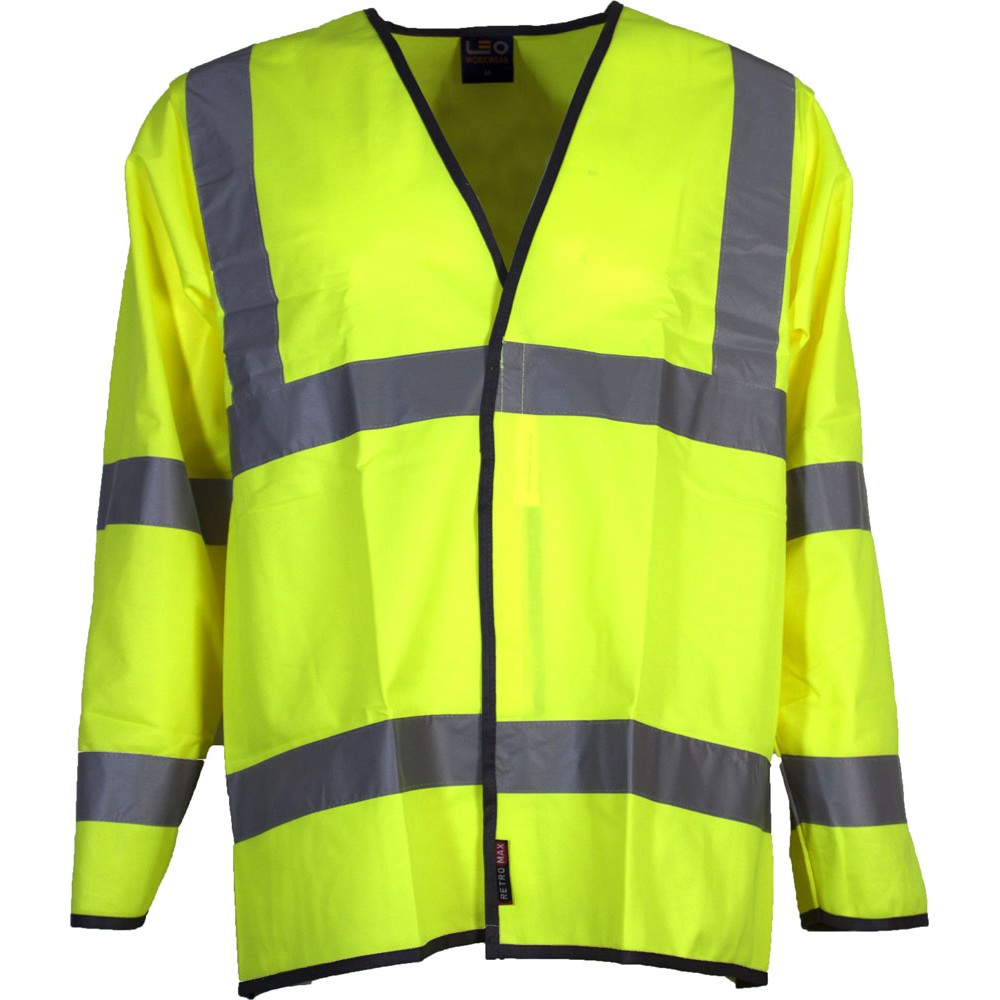 |
| Lynmouth Ladies Fitting Hi-Viz Vest with Zip & ID Pocket | Hi-Vis Two-Tone Vest | Hi-Vis Long-Sleeved Vest |
The Role of Standards in Shaping Workwear Designs
These standards have a profound impact on the design and manufacturing of high-visibility clothing. Manufacturers must adhere to the specific requirements regarding the colour, luminance, size, and placement of reflective materials. The standards ensure that the clothing provides an adequate level of visibility to keep workers safe in various environmental conditions.
Moreover, these regulations have also led to innovation in the industry. Manufacturers are constantly seeking new materials and designs that not only meet these stringent standards but also offer additional benefits like comfort, durability, and adaptability to different weather conditions.
In summary, standards like EN ISO 20471 are not just guidelines but essential frameworks that have shaped the evolution of high-visibility workwear in Europe. They ensure that the clothing worn by millions of workers across the continent provides a consistent and reliable level of safety, crucial in preventing workplace accidents and injuries.
High-Visibility Clothing in Various Industries
High-visibility workwear has become a staple in numerous industries, each with its specific requirements and challenges. The adaptability of high-vis clothing to various work environments underscores its significance in worker safety.
Construction and Road Work: The Quintessential Use of High-Vis Workwear
In construction and road work, high-visibility clothing is not just a safety measure; it's an absolute necessity. Workers in these sectors are often exposed to the dangers of moving machinery and vehicular traffic. High-vis vests, jackets, and trousers ensure that they are clearly visible to machine operators and drivers, significantly reducing the risk of accidents. The typical high-vis garments used in these industries are often Class 2 or Class 3, as defined by the EN ISO 20471 standard, providing optimal visibility in these high-risk environments.
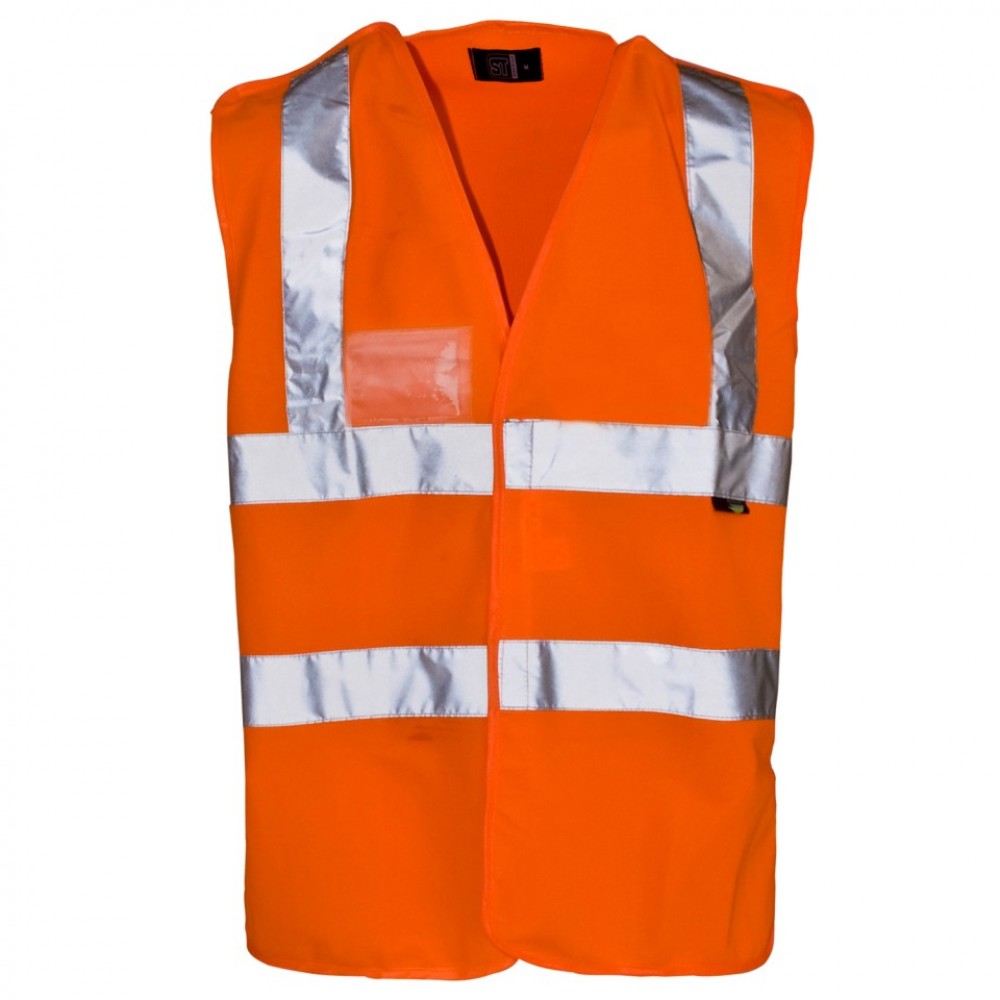 |
| Hi-Vis Pull Apart Vest |
Emergency Services: Adaptations for Visibility in Critical Situations
For emergency service personnel, including police, fire, and medical responders, visibility is crucial, especially in chaotic and potentially hazardous environments. High-visibility clothing for these professionals is designed not only to ensure they are seen but also to allow for quick identification. The clothing often incorporates specific colour codes and reflective patterns to distinguish different types of emergency services. Additionally, these garments are tailored to allow for maximum mobility and to accommodate additional gear that emergency personnel might need to carry.
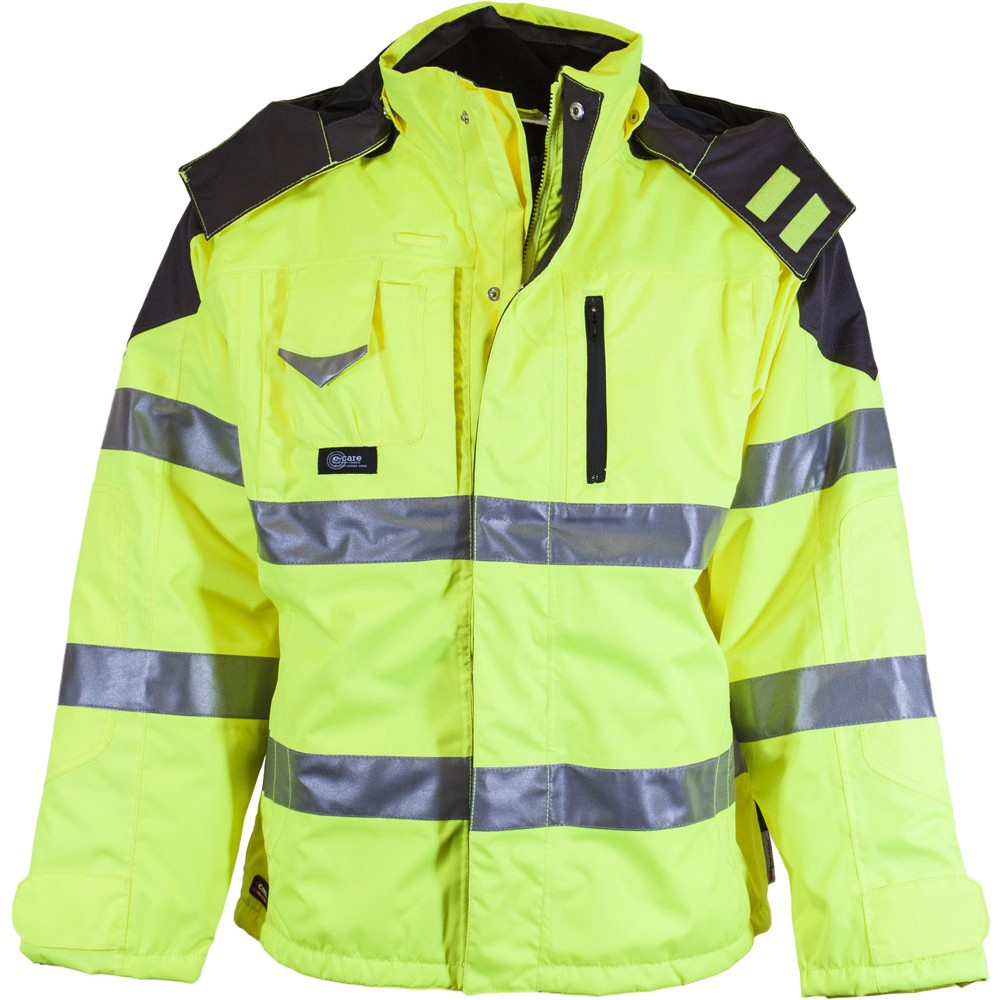 |
| Hi-Vis Rescue Jacket |
Other Sectors: Expanding Use in Diverse Industries
The use of high-vis workwear extends far beyond construction and emergency services. Industries such as aviation, logistics, warehousing, and even some areas of manufacturing have adopted high-vis clothing for their workers. In these settings, the clothing might vary in class and design based on the specific risks involved. For instance, warehouse workers might wear Class 1 high-vis vests to be visible to forklift operators, while airport ground staff might wear Class 3 garments due to the high risk associated with moving aircraft and vehicles.
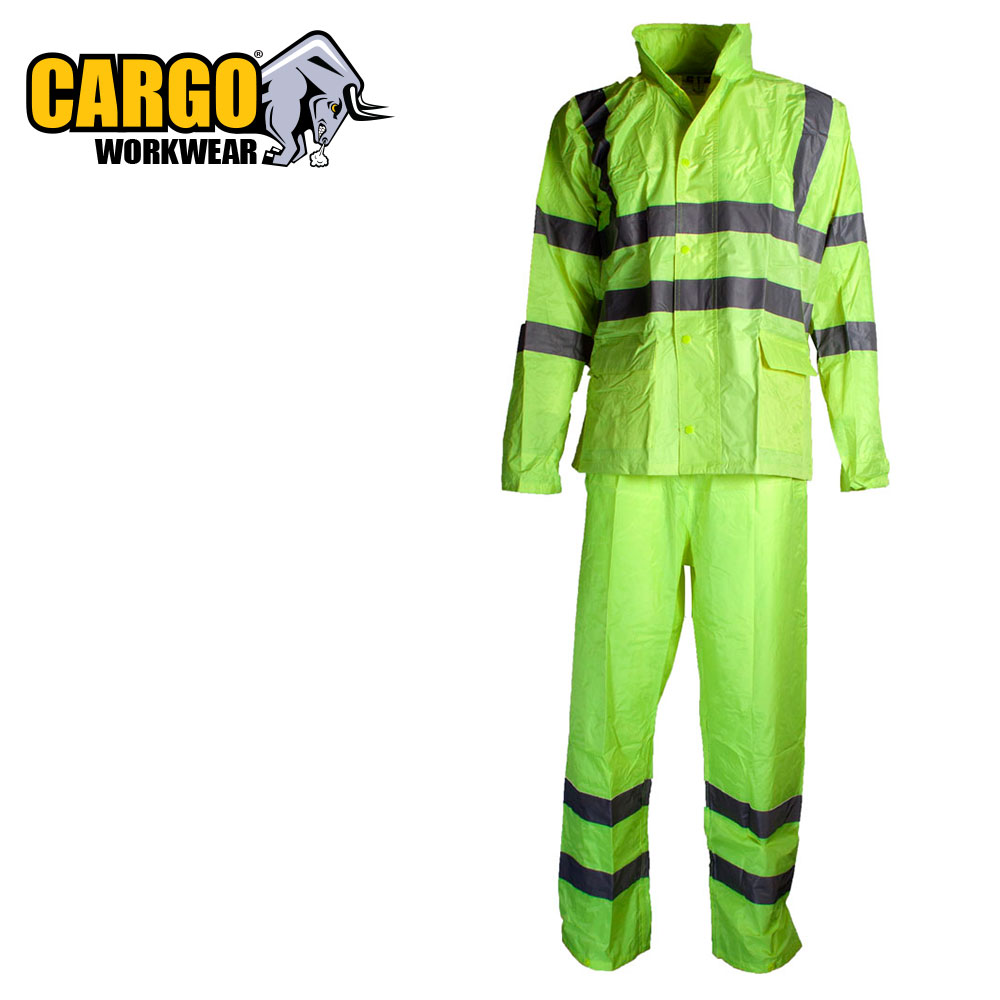 |
| Cargo Callan/Boyne Hi-Vis Two Piece Rainsuit |
The widespread adoption of high-visibility clothing across these diverse industries reflects a universal acknowledgement of its role in enhancing worker safety. By making workers conspicuous in a range of settings, high-vis workwear continues to be a fundamental element in the pursuit of safer working conditions across the globe.
The Role of High-Visibility Workwear in Accident Prevention
The impact of high-visibility workwear on enhancing safety and reducing workplace accidents is significant, as evidenced by various studies and real-world examples. The incorporation of high-vis clothing into safety protocols has demonstrably decreased the incidence of accidents, particularly in high-risk environments.
Statistical Insights: Reduction in Workplace Accidents
Numerous studies have shown that the adoption of high-visibility clothing leads to a marked reduction in workplace accidents. For instance, a study focusing on the construction industry revealed that implementing high-vis safety measures led to a significant decrease in the number of incidents involving workers being struck by vehicles or machinery. Similarly, in the road maintenance sector, the use of high-visibility clothing has been linked to a reduction in the number of accidents, particularly during night-time operations or in adverse weather conditions.
Case Studies and Examples
Construction Site Safety: In a notable case, a construction company implemented a strict policy requiring all site personnel to wear Class 3 high-visibility clothing. This policy resulted in a year-on-year decrease in the number of on-site accidents, particularly those involving heavy machinery.
Road Work Safety: An analysis of road work zones where workers were mandated to wear high-visibility gear showed a substantial reduction in the number of near-miss incidents and accidents, thereby enhancing overall safety.
Emergency Response: In emergency situations, such as roadside accidents, the use of high-vis clothing by first responders has been instrumental in preventing secondary accidents, ensuring that both the responders and the victims are visible and protected from additional risks.
These insights and examples underscore the vital role of high-visibility workwear in preventing accidents. By making workers easily visible, high-vis clothing acts as a critical safety tool, reducing the likelihood of accidents and improving overall workplace safety. Its effectiveness in various industries highlights the necessity of incorporating these safety measures as a standard practice across sectors where visibility is a key factor in ensuring worker safety.
Future Trends and Innovations
As we look towards the future, the field of high-visibility workwear is poised for exciting advancements. Two key trends are set to redefine the landscape of high-vis clothing: the integration of smart technology and the push towards sustainable and eco-friendly materials.
Smart Technology Integration in High-Vis Clothing
The integration of smart technology into high-visibility workwear is a burgeoning field that promises to enhance safety and functionality. This includes:
Wearable Sensors: High-vis garments equipped with sensors that can monitor a worker's vital signs, environmental conditions, and even their location. Such technology is invaluable in ensuring real-time safety monitoring and quick response in case of emergencies.
LED Lighting: The incorporation of LED lights into high-vis clothing offers improved visibility, especially in low-light conditions. This technology is particularly beneficial for workers operating at night or in areas with limited lighting.
Connectivity Features: High-vis clothing with embedded connectivity, such as GPS and Bluetooth, can facilitate better coordination among team members and enable precise location tracking, crucial in large, dynamic work environments.
Sustainable and Eco-Friendly Materials in Workwear Production
Sustainability is another major trend shaping the future of high-visibility workwear. With an increasing focus on environmental responsibility, the workwear industry is exploring:
Recycled Materials: Using recycled plastics and fabrics in the production of high-vis clothing, thereby reducing waste and environmental impact.
Biodegradable Fabrics: Development of biodegradable materials that maintain the necessary safety standards while ensuring environmental sustainability.
Eco-Friendly Manufacturing Processes: Adoption of greener manufacturing practices that reduce carbon footprint and minimise the use of harmful chemicals.
These innovations in high-visibility workwear not only aim to enhance the safety and efficiency of workers but also reflect a growing commitment to environmental sustainability and technological advancement. As we move forward, these trends are expected to drive the development of more sophisticated, efficient, and eco-conscious high-vis clothing, setting new standards in workplace safety and environmental responsibility.
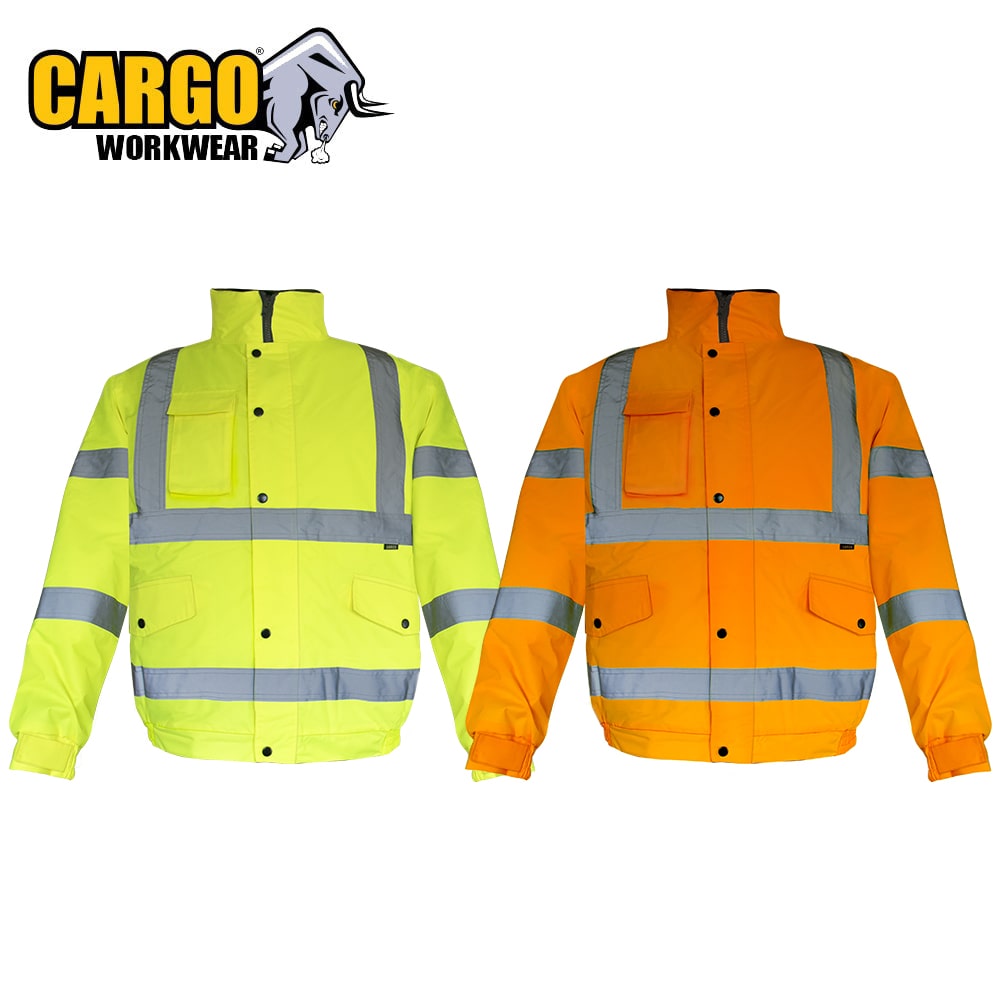 |
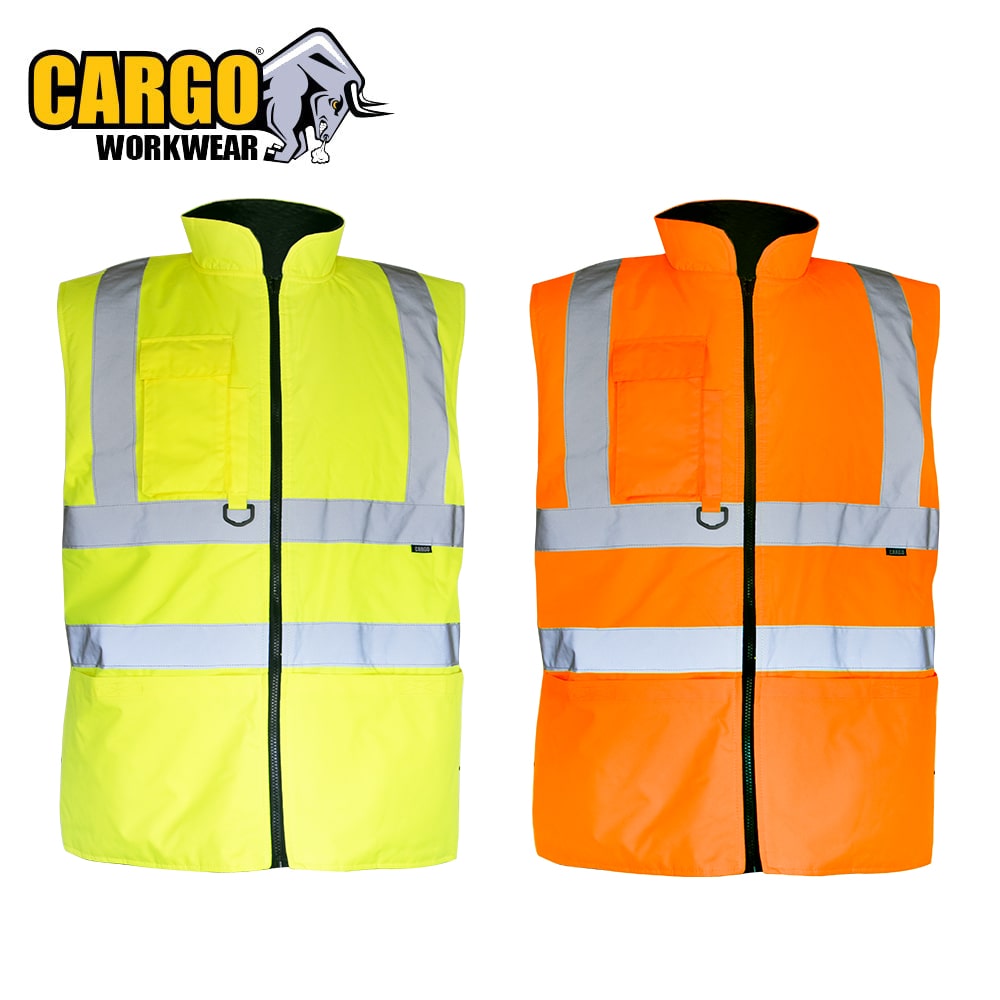 |
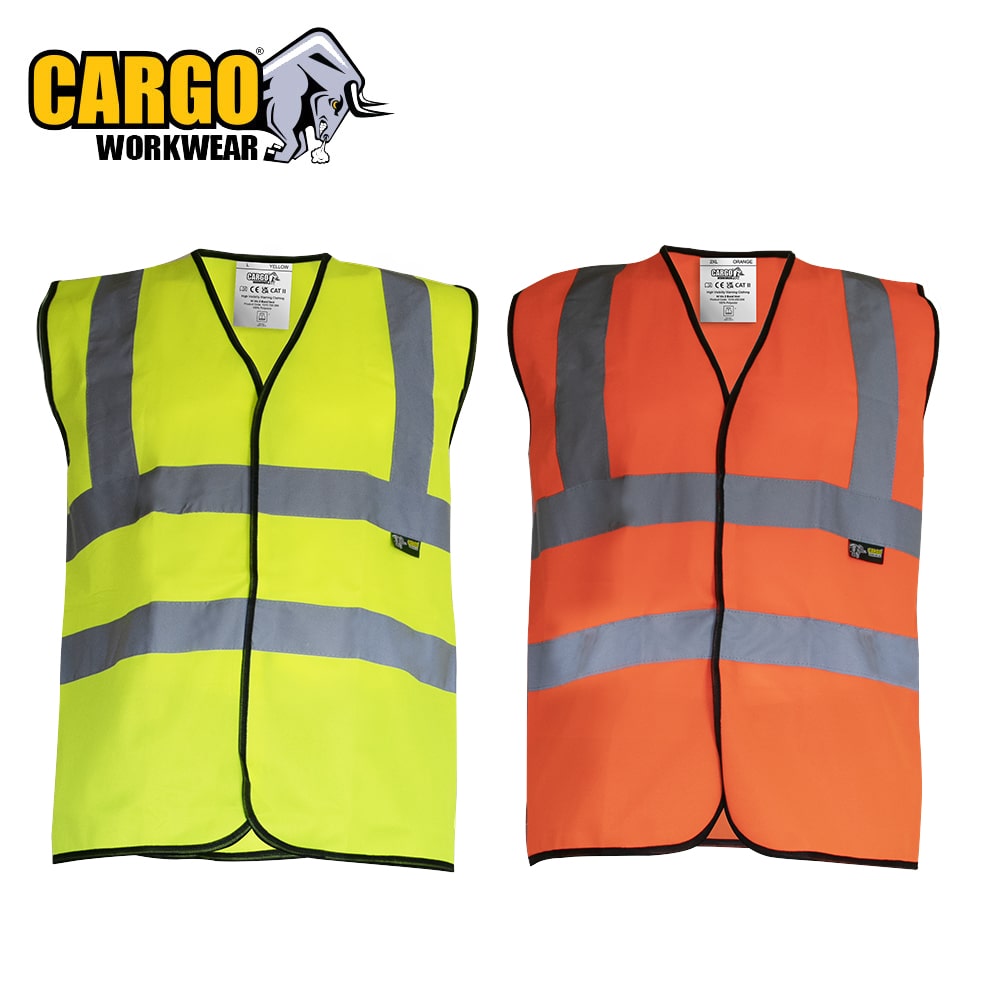 |
| Cargo Hi-Vis Bomber Jacket | Cargo Hi-Vis Reversible Gilet Bodywarmer | Cargo Hi-Vis 2 Band Vest |
Conclusion
The journey of high-visibility workwear from its rudimentary beginnings to its current state as a sophisticated safety tool is a testament to the relentless pursuit of workplace safety. Over the decades, high-vis clothing has evolved from basic, brightly coloured garments to highly specialised apparel designed to meet stringent safety standards and adapt to various work environments. Today, high-visibility workwear is an integral part of the safety protocols across numerous industries, significantly reducing the risk of accidents and enhancing the visibility and protection of workers.
Looking to the future, high-visibility clothing is set to undergo further transformations. The integration of smart technology and a shift towards sustainable manufacturing practices are poised to redefine what high-vis workwear can achieve, both in terms of worker safety and environmental responsibility. These advancements promise not only to continue the tradition of protecting workers but also to introduce new dimensions of safety monitoring and eco-consciousness.
In light of these developments, it is crucial for businesses, safety professionals, and workers alike to stay abreast of the latest trends and innovations in workwear technology. Prioritising safety by adopting the most advanced and appropriate high-vis clothing is not just a regulatory compliance issue but a fundamental aspect of responsible business practice and personal safety.
We encourage our readers to continually seek out the latest advancements in high-visibility workwear. By staying informed and proactive, you can ensure that your workplace remains a safe environment, effectively adapting to the ever-changing landscape of workplace safety standards and technology. Remember, in the world of work safety, visibility is not just about being seen; it's about being safe.
Your email address cannot be published. Required fields are marked*
